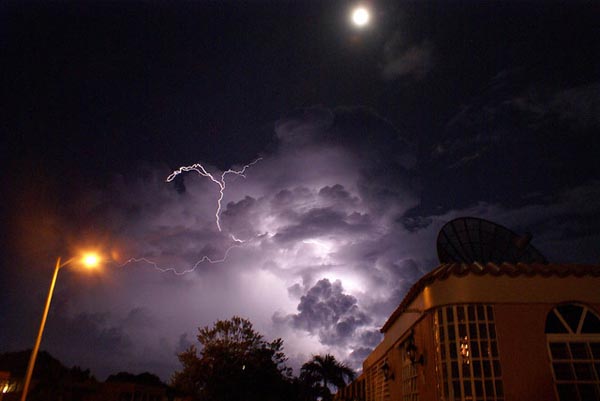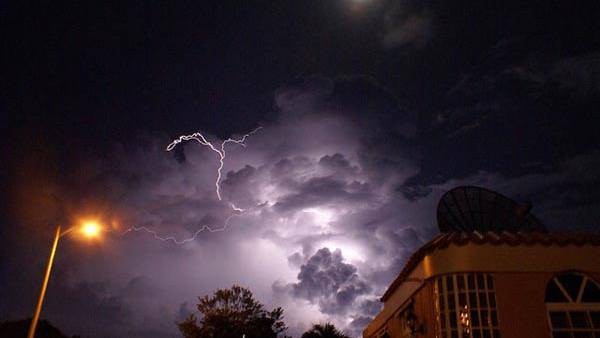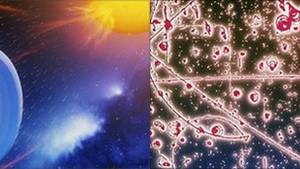Thunderstorms Spawn Antimatter
Source: latimes.com

To the great surprise of physicists and meteorologists alike, NASA’s orbiting Fermi gamma-ray observatory has discovered that thunderstorms are emitting powerful bursts of antimatter into space.
Antimatter is a mirror image of normal matter with unusual properties — protons with negative charges, electrons with positive charges, and so on. It was created in equal abundance to normal matter at the beginning of the universe, but was destroyed when it came in contact with the normal matter and is now primarily the subject of fiction: the material that powers the starship Enterprise, the bomb beneath the Vatican in the novel "Angels & Demons," and so on.
Very small amounts have been produced by powerful particle accelerators including CERN’s Large Hadron Collider in Switzerland, but can be captured for only fractions of a second. That’s why researchers are so astonished to see antimatter being produced by such a common event as lightning.
In retrospect, "we can say, ’Why didn’t we realize that was happening?’ " said physicist Joseph R. Dwyer of the Florida Institute of Technology in Melbourne, Fla., a coauthor of a paper about the findings that is scheduled to appear in the journal Geophysical Research Letters. Even so, "it’s surprising that we are seeing so much…. It illustrates the amazing things that thunderstorms can do."
Some indirect evidence in the past suggested that antimatter might be emitted by lightning, added electrical engineer Steven Cummer of Duke University, who studies lightning and the radio emissions from it. "But this is the first time it has been absolutely, unambiguously detected," he said.
Fermi, launched in 2008, detects gamma rays, the highest-energy form of electromagnetic waves — a spectrum that includes light rays. When a positron produced by a thunderstorm strikes an electron on the satellite, it releases gamma rays with a characteristic energy of 511,000 electron-volts. Such an event linked to a thunderstorm is known as a terrestrial gamma-ray flash. Fermi has witnessed 130 such events since its launch.
Most such events occurred when the satellite was directly over a storm. But one event, on Dec. 14, 2009, occurred when Fermi was over Egypt and the nearest active storm was in Zambia, about 2,800 miles to the south and well below the satellite’s horizon.
But the spacecraft was connected to the storm by the Earth’s magnetic field, Dwyer said. Particles rode up the lines of force and struck the craft. Some went past it and reached what is known as a mirror point, where increasing magnetic-field strength caused the particles to reverse their direction and journey back to strike Fermi 23 milliseconds after the first group.
Researchers still have only the roughest of ideas what is happening inside a thunderstorm when lightning is triggered. What is clear is that electric fields build up and accelerate electrons almost to the speed of light, like a giant particle accelerator in the sky, Dwyer said. The electrons "bump into air atoms and make gamma rays, which blast electrons and antielectrons out of the atmosphere."
What’s interesting, Cummer added, "is if we take what we know is happening and calculate how much antimatter might be produced, it’s quite a bit less than what was observed…. So clearly, we don’t have a lot of the details."
The research was also presented Monday at a Seattle meeting of the American Astronomical Society.
Article from: latimes.com
Fermi Sees Antimatter-Hurling Thunderstorms
Video from: YouTube.com






















